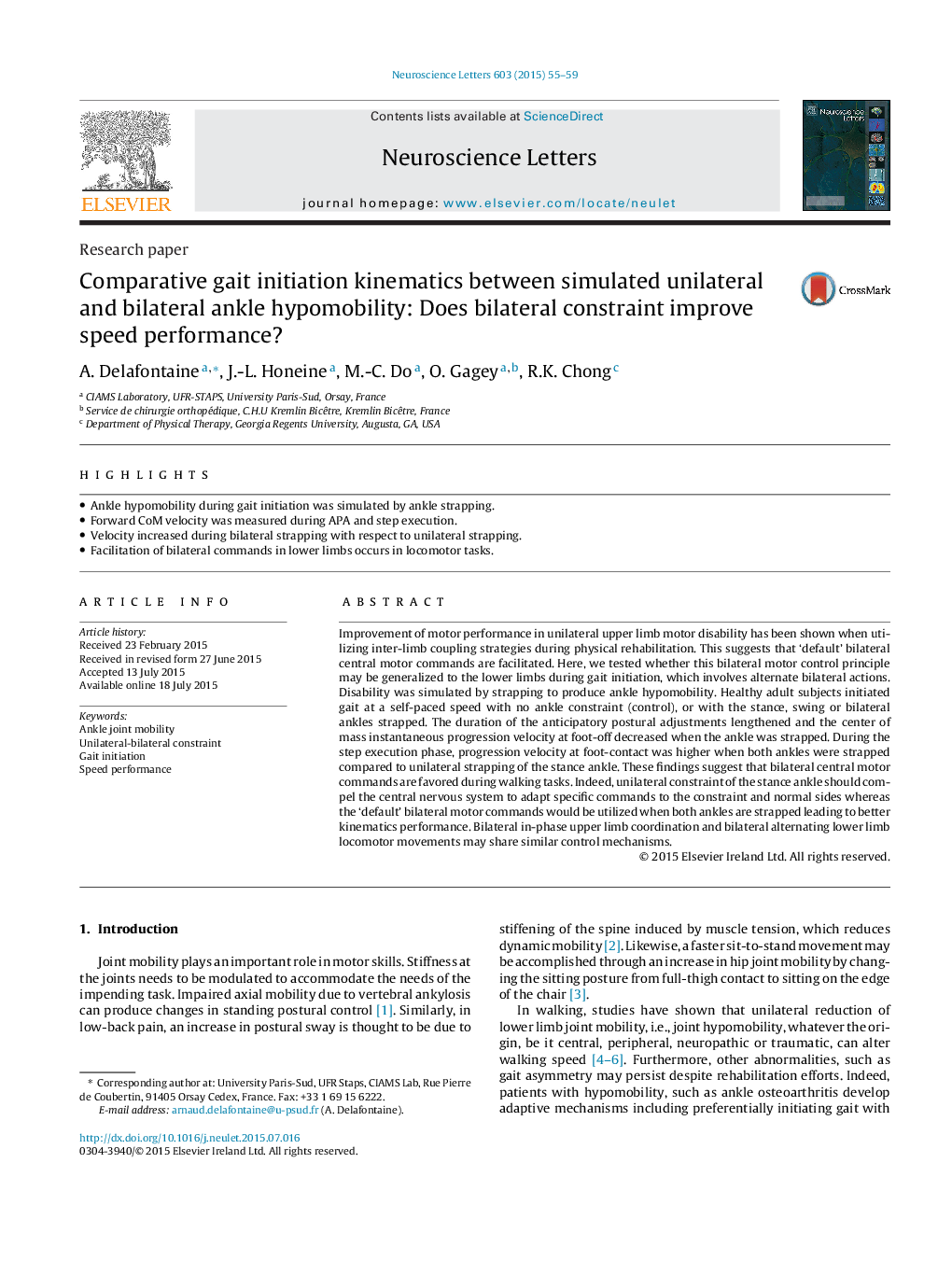| Article ID | Journal | Published Year | Pages | File Type |
|---|---|---|---|---|
| 6280669 | Neuroscience Letters | 2015 | 5 Pages |
â¢Ankle hypomobility during gait initiation was simulated by ankle strapping.â¢Forward CoM velocity was measured during APA and step execution.â¢Velocity increased during bilateral strapping with respect to unilateral strapping.â¢Facilitation of bilateral commands in lower limbs occurs in locomotor tasks.
Improvement of motor performance in unilateral upper limb motor disability has been shown when utilizing inter-limb coupling strategies during physical rehabilitation. This suggests that 'default' bilateral central motor commands are facilitated. Here, we tested whether this bilateral motor control principle may be generalized to the lower limbs during gait initiation, which involves alternate bilateral actions. Disability was simulated by strapping to produce ankle hypomobility. Healthy adult subjects initiated gait at a self-paced speed with no ankle constraint (control), or with the stance, swing or bilateral ankles strapped. The duration of the anticipatory postural adjustments lengthened and the center of mass instantaneous progression velocity at foot-off decreased when the ankle was strapped. During the step execution phase, progression velocity at foot-contact was higher when both ankles were strapped compared to unilateral strapping of the stance ankle. These findings suggest that bilateral central motor commands are favored during walking tasks. Indeed, unilateral constraint of the stance ankle should compel the central nervous system to adapt specific commands to the constraint and normal sides whereas the 'default' bilateral motor commands would be utilized when both ankles are strapped leading to better kinematics performance. Bilateral in-phase upper limb coordination and bilateral alternating lower limb locomotor movements may share similar control mechanisms.
